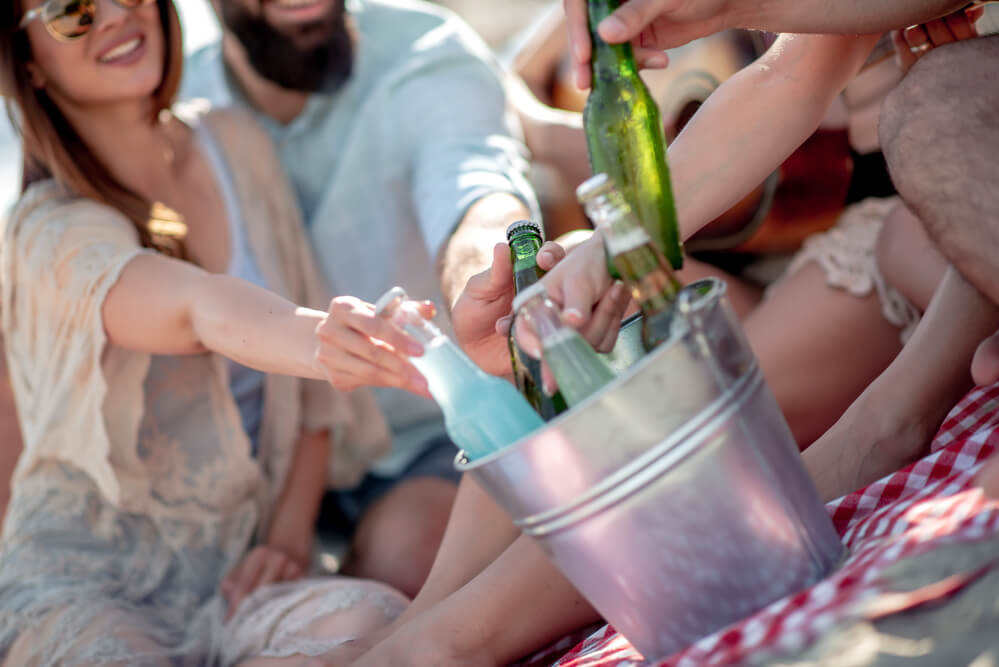In this article, I’ll discuss IPA vs Pale Ale to help you decide which one is right for your next brew or beverage.
Whether choosing your first homebrew or grabbing a few cans for your friend’s tasting event, choosing a craft beer can be overwhelming. At beer festivals and bars, I used to have friends recommend whatever was closest to a lager and never experimented further.
I thought I hated IPAs and assumed they were too hoppy for me. Years later I discovered I was missing out on a world of flavour opportunities.
Table of Contents
What’s a Pale Ale?
Pale Ales are the umbrella category under which IPAs sit. Pale refers to their colour. At the time of their rise to popularity, porters (usually dark and heavy) were the common beer on the market. Pale Ales have a steady flavour balance of malts and hops. There are many different subcategories of Pale Ales, including American, English and IPAs. These each also have subcategories, but that’s a rabbit hole for another day.
What’s an IPA?
IPAs are one of the many subcategories of Pale Ales. They’re often hoppier than traditional Pale Ales and usually have a higher ABV (alcohol by volume). In today’s market, IPAs have their own subcategories (West Coast, British, New England, etc.).
Several centuries ago Pale Ales were less common. IPAs got their name because a particular type of high-end Pale Ale meant for aging became popular among British colonists in India. These Pale Ales were originally intended to compete with the wine market, but they were also a perfect alternative to the porters the colonists were drinking at the time.
There were two reasons for this. First, these Pales Ales intended for aging didn’t spoil during the 18-month boat trips. Second, they were a more refreshing drink for the balmy region than the common porters. To read more about this history, and to sound really smart at your next tasting, check out this article from the Smithsonian about how IPAs got their name.
What IPAs and Pale Ales Have in Common?

There are two main types of beer, ales and lagers. This is determined based on the fermentation process. Pales Ales and IPAs (both ales) are golden, copper or amber in colour. They’re brewed via top fermentation and at warmer temperatures.
Because they’re fermented at warmer temperatures, they don’t need to be served cold. Letting them sit out a few minutes before serving can intensify and enhance flavours. This makes them great choices for situations where cold beer might not be an option, like camping or hanging out in someone’s backyard.
What Makes IPAs and Pales Ales Different?
What makes a traditional IPA stand out is its reliance on fruit, citrus and floral flavours. Typically IPAs are hoppier than other Pale Ales and have a higher ABV. Pale Ales are usually maltier and breadier in flavour. However, these aren’t hard and fast rules, especially with the appearance of newer varieties of IPAs over the last half century.
Pale Ales are Better for a General Audience
Pale Ales are easy drinking beers and better for a general audience. There are still a lot of varieties to choose from, so it’s easier to find something for everyone.
IPAs are More Intense and Have Higher ABVs
Flavours in IPAs are more intense than other Pale Ales. They’re also hard hitters as they often have a higher ABV.
When Should I Choose a Pale Ale?
If you’re planning a get-together or packing a host gift then Blonde or Amber Ales, and other easy drinking Pale Ales, are better choices. If you’re pairing with food, Pale Ales go well with pub fare like burgers and Shepherd’s Pie.
When Should I Choose an IPA?
If you or the people you’re serving like intense flavours, then IPAs are a good choice. You can also choose how hoppy you want to get with Double (Imperial) and Triple IPAs. The numerical reference indicates double or triple hops content and ABV. If you’re pairing with food, IPAs go well with strong blue cheeses or cheddars.
Table Comparing Brew Types
| IPAs | Pale Ales |
| Fruit, citrus and floral flavours | Bready and malty flavours |
| High ABV | Low to medium ABV |
| Often described as intense/strong beer. | Often described as easy-drinking beer. |
| Niche audience | Broad audience |
| Pairs well with strong cheeses (blue or cheddar) | Pairs well with pub fare (shepherd’s pie or burgers) |



